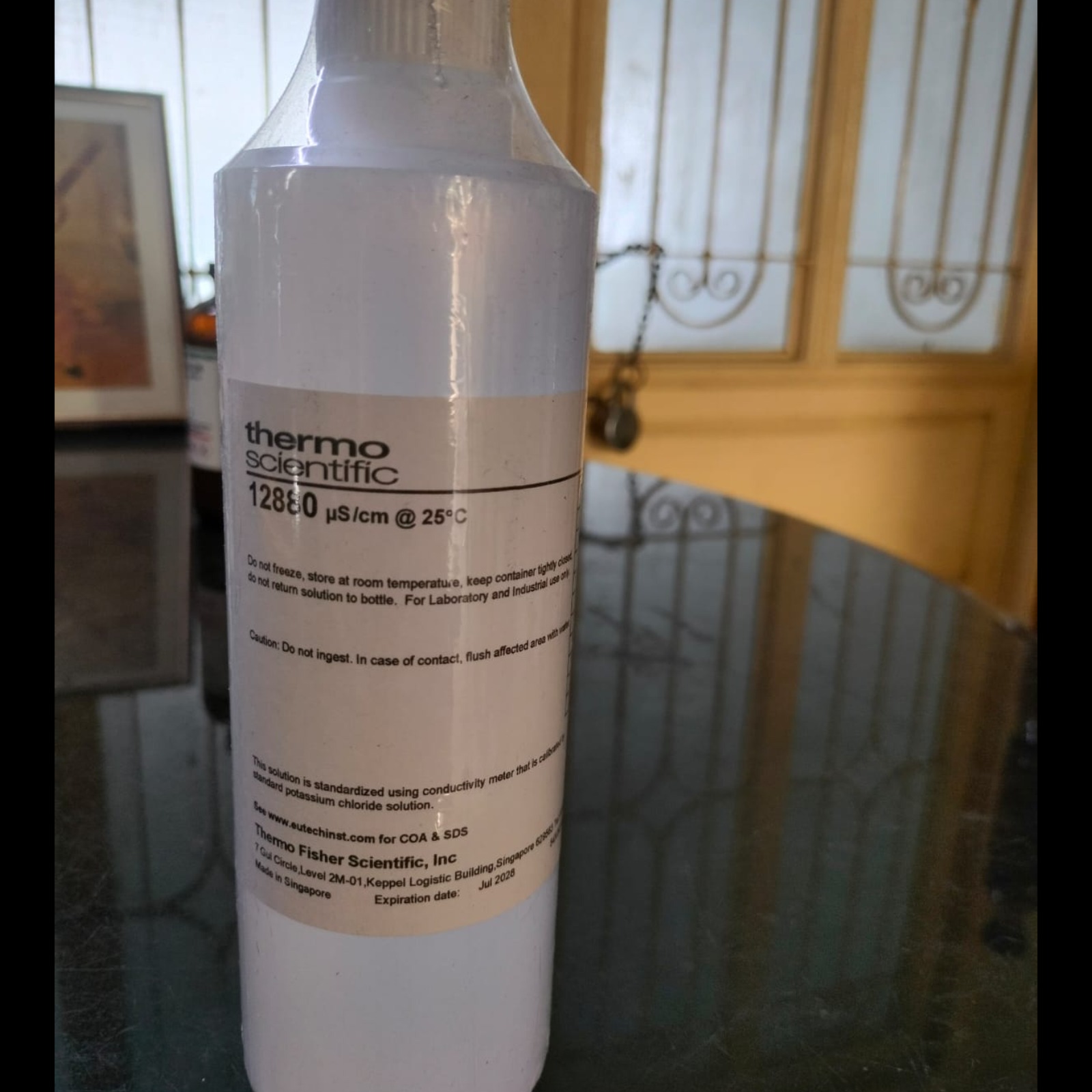
2025-10-10T07:19:45
12880 µS/cm Conductivity Standard Sachets (25 x 20 mL) - HI700304P. HI700304P Pool Line 12, 880 µS/cm Conductivity Standard Sachets are premium quality standard used to calibrate conductivity meters that measure the salt level in swimming pools, spas, and hot tubs. Conductivity solutions are standardized solutions with known electrical conductivity used for calibrating conductivity meters. They are typically aqueous solutions with a precise and traceable conductivity value, used to ensure accurate measurements of an unknown solution's ability to conduct electricity. These solutions come in single-point and multi-point versions, with various conductivity values and sometimes a corresponding certificate of analysis (CoA) for quality assurance. Purpose: To calibrate conductivity meters by providing a known reference point for the measurement. Composition: They are usually aqueous solutions, which makes handling, storage, and disposal simpler. For example, some are based on sodium chloride (NaClcap N a cap C l��������). Types: Single-point: Solutions with a single, fixed conductivity value for calibrating meters that require a one-point calibration. Multi-point: Solutions with a range of conductivity values used for calibrating meters that support a multi-point calibration to ensure accuracy over a broader range. Calibration: They are essential for establishing accuracy. The conductivity of a solution is temperature-dependent, so calibration solutions are often certified to a specific temperature. Verification: Some low-conductivity standards are highly sensitive to contamination from CO2 in the air and are best used for verifying a meter's reading rather than calibrating it, as their value can change quickly. Certification: High-quality solutions come with a certificate of analysis (CoA) that documents their accuracy, quality control, and traceability to national or international standards. Safety: Aqueous conductivity standards are generally considered safer and easier to handle than non-aqueous ones. Safety information, like that found on the Safety Data Sheet (SDS), is available for each solution.

Have a question? Ask here!
Required fields are marked *